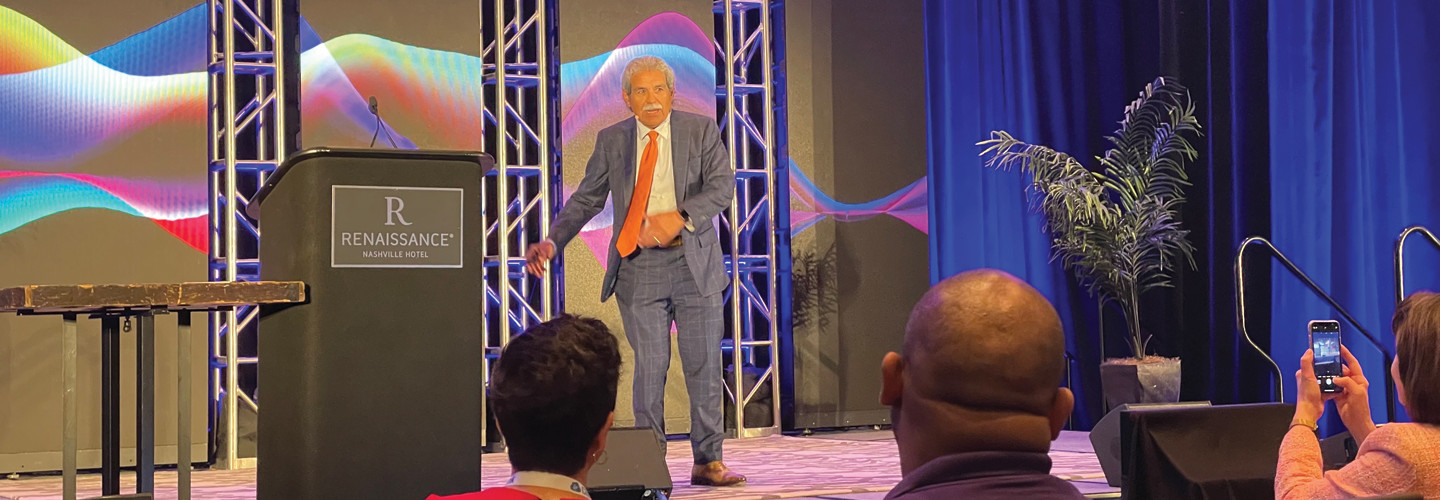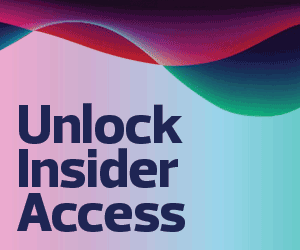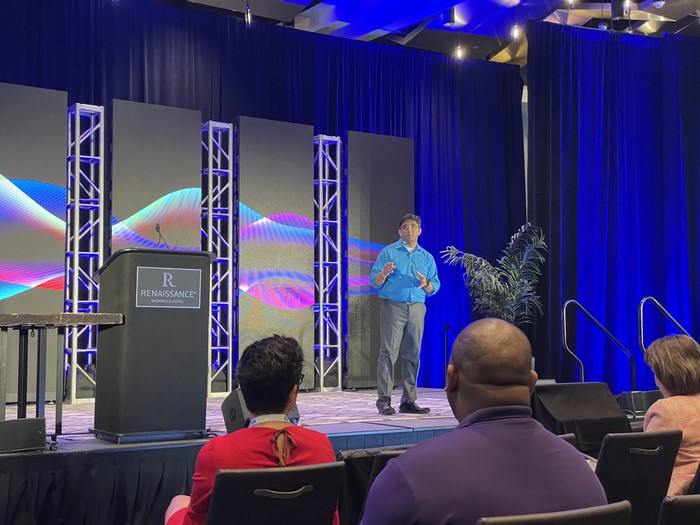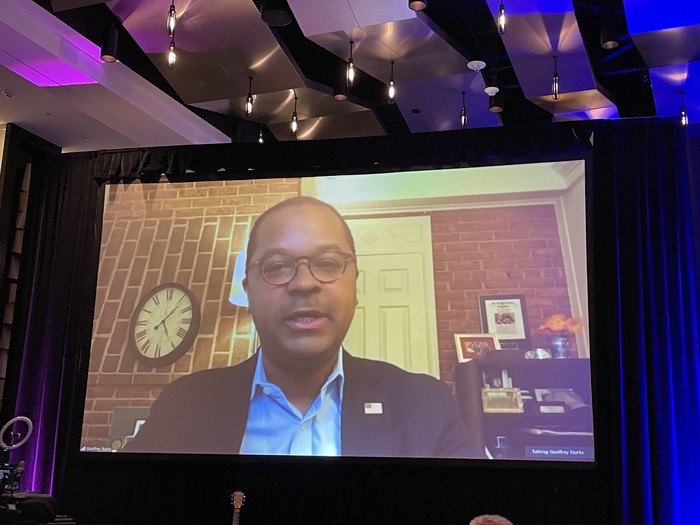Arlington (Va.) Public Schools Assistant Superintendent and CIO Raj Adusumilli speaks at CoSN2022.
Hinojosa also faced connectivity concerns in Dallas ISD when the pandemic began. He shared the lessons he learned on his journey to becoming a leader in K–12 education and how it helped him connect 36,000 households with no connectivity in his district.
“Dallas is a tale of two cities,” Hinojosa said. “You have big, beautiful Dallas, while 90 percent of our students are economically disadvantaged, 95 percent of our students are minority students, and 48 percent of our students are English learners.”
Additionally, Dallas ISD’s Pathways in Technology Early College High School (P-TECH) program — a partnership between the district, higher education and many CTE industry partners — grew tremendously, giving underprivileged students an opportunity to get ahead in tech and construction careers.
READ MORE: Districts partner with businesses to train tomorrow’s IT workforce.
FCC Commissioner Shares Insights on Affordable Access
Starks, who joined the speaker lineup only hours before the conference began, answered questions Doe posed in a Q&A format. The conversation centered on the FCC’s plans for affordable connectivity for families across the nation.
“We’ve been talking for almost 30 years about closing the digital divide,” Starks said. “The pandemic amplified the disparities of who has, and who does not have, connectivity. It widened the chasm on young learners being able to perform. It has really demonstrated the urgent need to close the digital divide.”
He noted that standing up a brand-new federal program is difficult, and that ensuring equitable connectivity will be a communitywide effort.
Starks told attendees that the most important responsibility is to get the word out. “Trusted voices, like school districts, I cannot impart to you the strength of the voice that you have in not only letting people know about the program but encouraging them to sign up,” he said. “Having that person-to-person, trusted voice is mission critical.”












